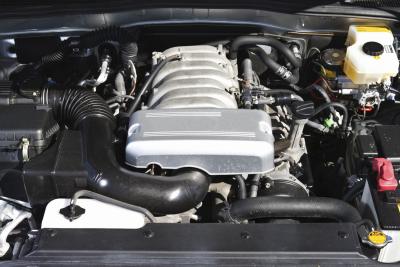
GM's short-lived (1989 to 1998) Geo division was launched as a stop-gap measure to compete in the United States' small but rapidly growing compact car market. GM capitalized on the popularity of its association with offshore brands (primarily Isuzu) by essentially re-badging their products and selling them as an independent "all-American" brand. One consequence of this approach was the importation of a number of oddball engines, perhaps none so well-known as the Geo 3-cylinder.
In their original form, Geos were designed to be sold as low-cost, gas-saving runabouts in less affluent countries. The 3-cylinder is a reliable engine, designed to run for many years with a minimum of maintenance, and many are known to surpass a quarter of a million miles without any major repairs. However, the ancillary components used aren't always of the highest quality, and subtle failures can mimic the result of failing cylinders and components. If your cylinder compression and oil pressure are within stock limits, and there are no obvious coolant crossovers (oil in water, water in oil), then more than likely you have a simpler problem. Try flushing the coolant and oil system; you'd be surprised how much a little garbage can clog up the 3-cylinder's tiny passages.
If you're compression test indicates a problem in the first or last cylinder (numbers 3 or 1), then your Geo is one of many thousands with a burned exhaust valve. This is an endemic problem for Geo engines, and while no one seems to have pinpointed the cause, the symptoms are well-known.
After pulling the cylinder head, you'll almost certainly find that the number 1 cylinder's piston looks significantly cleaner than the other two. This clean piston got that way because unburned fuel dissolved the carbon that would have otherwise built up; a sure sign of a burned valve. The engine only has six valves, so you might as well replace all of them while you're at it. The burned valve is a result of carbon buildup in the EGR valve (exhaust crossover) passage, so consider sending the head out for a professional "hot-tank" cleaning.
After the head has been dealt with, rebuilding a 3-cylinder metro engine is much like rebuilding any other. Purchase a Haynes or factory service manual ($20 online), clean the engine, replace the ring and bearings and reassemble accordingly, using the specified procedures and torque specs. While that seems like an oversimplification, trust that it isn't by much. The Geo 3-cylinder is a popular choice for high-school auto programs primarily because its very basic nature makes the engine such an easy rebuild.
You will want to watch out for the bolts; all Geo 3-cylinder engines use torque-to-yield (TTY) head and main bolts that permanently stretch after loading, so they cannot be used again. You could purchase new TTY bolts, but most mechanics will simply replace them with cheaper and stronger Grade 8 units. It's not factory-recommended, but replacing TTY bolts is common practice and is incredibly unlikely to lead to any sort of failure.